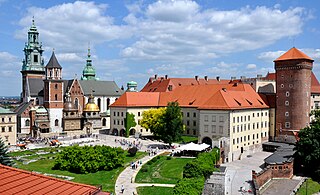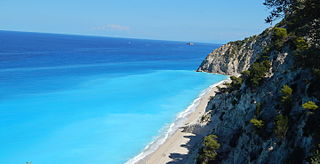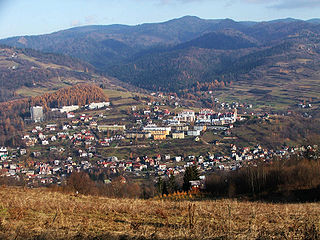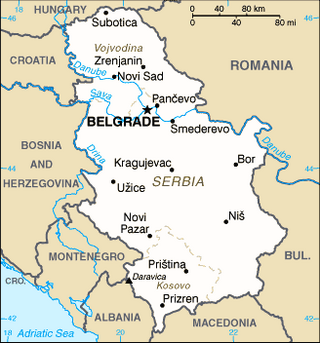The following is a partial list of spa towns in Poland .
The following is a partial list of spa towns in Poland .

A spa town is a resort town based on a mineral spa. Patrons visit spas to "take the waters" for their purported health benefits.

Poland is a part of the global tourism market with constantly increasing number of visitors. Tourism in Poland contributes to the country's overall economy. The most popular cities are Kraków, Warsaw, Wrocław, Gdańsk, Poznań, Szczecin, Lublin, Toruń, Zakopane, the Salt Mine in Wieliczka and the historic site of Auschwitz – A German Nazi concentration camp in Oświęcim. The best recreational destinations include Poland's Masurian Lake District, Baltic Sea coast, Tatra Mountains, Sudetes and Białowieża Forest. Poland's main tourist offers consist of sightseeing within cities, historical monuments, natural monuments, business trips, agrotourism, bicycle touring, qualified tourism, mountain hiking (trekking) and climbing among others.

Tourism in Greece has been a key element of the economic activity in the country, and is one of the country's most important sectors. Greece has been a major tourist destination and attraction in Europe since the 1970s for its rich culture and history, which is reflected in large part by its 18 UNESCO World Heritage Sites, among the most in Europe and the world as well as for its long coastline, many islands, and beaches.

Spa is a city and municipality of Wallonia located in the province of Liège, Belgium, whose name became an eponym for mineral baths with supposed curative properties. It is situated in a valley in the Ardennes mountains 35 km (22 mi) south-east of Liège and 45 km (28 mi) south-west of Aachen. In 2006, Spa had a population of 10,543 and an area of 39.85 km2 (15.39 sq mi), giving a population density of 265/km2 (690/sq mi).

Sokobanja is a spa town and municipality located in the Zaječar District of the eastern Serbia. As of 2011, the population of the town is 7,982, while population of the municipality is 16,021.

Trenčianske Teplice is a health resort and small spa town in western Slovakia, in the valley of the river Teplička, at the foothills of the Strážovské vrchy mountains, a few kilometres away from the city of Trenčín.

Duszniki-Zdrój, often simplified to Duszniki, is a spa town in Kłodzko Valley and Kłodzko County, Lower Silesian Voivodeship, in southwestern Poland. As of December 2021, the town has a population of 4,329. Situated on the Bystrzyca River, it attracts tourists from Poland and around the world.

Aranđelovac is a town and a municipality located in the Šumadija District of central Serbia. As of 2011, the municipality has a population of 46,225 inhabitants, while the town has 24,797 inhabitants.

Poděbrady is a spa town in Nymburk District in the Central Bohemian Region of the Czech Republic. It has about 14,000 inhabitants. It lies on the river Elbe. The town centre is well preserved and is protected by law as an urban monument zone.

Uniejów is a spa town in Poddębice County, Łódź Voivodeship in central Poland, with 2,957 inhabitants (2020). It is the seat of the local government of Gmina Uniejów.

Szczawnica is a resort town in Nowy Targ County in Lesser Poland Voivodeship, in southern Poland. As of June 30, 2007, its population was 7,378.

Çermik is a town and district of Diyarbakır Province of Turkey. The population is 50,390 as of 2021. The mayor is Şehmus Karamehmetoğlu from the Justice and Development Party (AKP), and the current Kaymakam is Nazlı Demir.

Ciechocinek is a spa town in Kuyavian-Pomeranian Voivodeship, north-central Poland, located on the Vistula River about 10 kilometres (6.2 mi) east of Aleksandrów Kujawski and 20 kilometres (12 mi) south-east of the city of Toruń. It is located within the historic region of Kuyavia. As of December 2021, the town has a population of 10,442.

Rajecké Teplice is a spa town in the Žilina District, Žilina Region in northern Slovakia.

There is a long history of tourism in Hungary, and Hungary was the world's thirteenth most visited tourist destination country in 2002. Tourism increased by nearly 7 percent between 2004 and 2005. European visitors comprise more than 98 per cent of Hungary's tourists. Austria, Germany, and Slovakia make the largest numbers of visitors to the country. Most tourists arrive by car and stay for a short period of time. Hungary's tourist season is from April through October. July and August are the best tourist months. Budapest is the country's most popular tourist destination.

Abastumani is a small town (daba) and climatic spa in Adigeni Municipality, Samtskhe-Javakheti, Georgia. It is located on the southern slopes of the Meskheti Range, in the small river valley of Otskhe, 25 km northeast of Adigeni and 28 km west of Akhaltsikhe. As of the 2014 census, it had a population of 937. The Georgian National Astrophysical Observatory is located at Abastumani.

Buxton Crescent is a Grade-I-listed building in the town of Buxton, Derbyshire, England. It owes much to the Royal Crescent in Bath, but has been described by the Royal Institution of British Architects as "more richly decorated and altogether more complex". It was designed by the architect John Carr of York, and built for the 5th Duke of Devonshire between 1780 and 1789. In 2020, following a multi-year restoration and redevelopment project supported by the National Heritage Memorial Fund and Derbyshire County Council, The Crescent was reopened as a 5-star spa hotel.

Tourism in Serbia is officially recognized as a primary area for economic and social growth. The hotel and catering sector accounted for approximately 2.2% of GDP in 2015. Tourism in Serbia employs some 75,000 people, about 3% of the country's workforce. In recent years the number of tourists is increasing, especially foreign ones for about hundred thousand arrivals more each year. In 2019, tourism generated an income of nearly $1.698 billion, hosting 3.7 million tourists, half of whom were foreigners. Chinese tourists were the most numerous foreign visitors, followed by tourists from Bosnia and Herzegovina, Bulgaria, Turkey, and Germany. Major destinations for foreign tourists are Belgrade, Novi Sad and Niš, while domestic tourists prefer spas and mountain resorts. Eco-friendly and sustainable tourism has also become very popular among domestic tourists, with many young people visiting various nature reserves and parks in the western and southern part of the country. Serbia is also known for gastronomic tourism, in both urban and rural areas of the country, with Belgrade being the central meeting point with over 1800 restaurants, coffee shops, bars and nightlife venues.